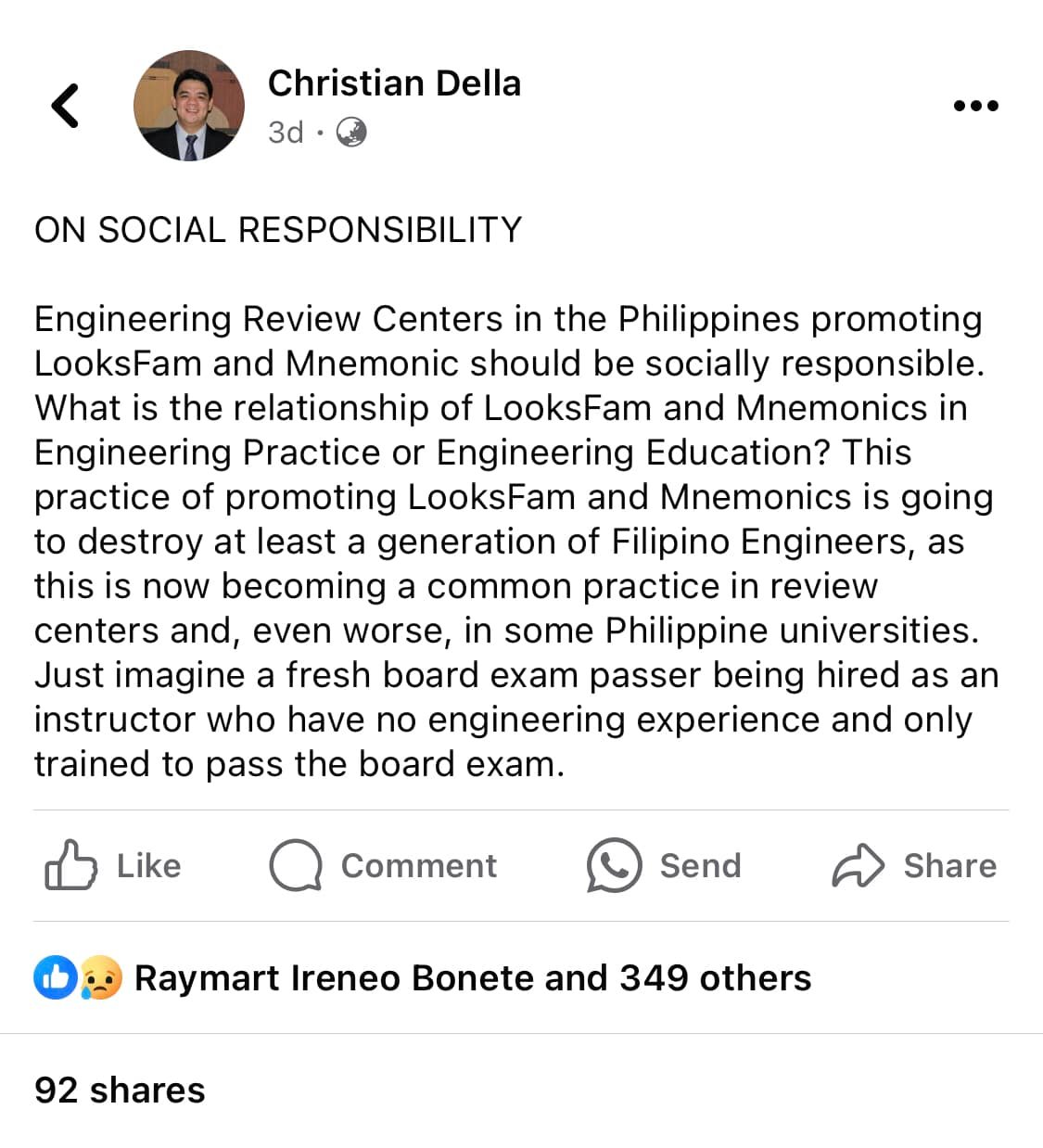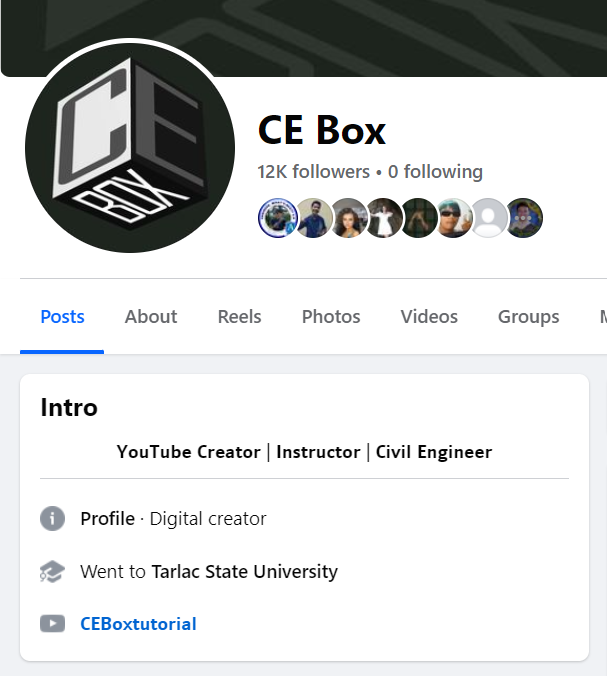Topnotcher's Take on Looksfam
Recently, there has been a trending post within the Civil Engineering community from Dr. Christian Della, a Lecturer at the University of the Philippines, that has been shared multiple times on Facebook and other social media platforms. The post was about the social responsibility of engineering review centers in promoting LooksFam. I will not define it further as this will be defined in Engr. Jaydee Lucero's post, sharing the trending post and expressing his opinion regarding the issue.
Engineer Jaydee Lucero is the first placer in the November 2018 board exam and is now a lecturer at a civil engineering review center.
See full context below:

Original post
My opinion.
Looksfam (as pattern recognition) and mnemonics are legitimate methods of studying things. [To be clear though, hindi ako fan ng looksfam and mnemonics kasi hindi ganun kalakas memorization skills ko, and hindi naman lahat magaling sa memorization.]
Ang against lang ako ay kung ginagamit ang looksfam just to memorize answers in the hopes na lumabas yung same exact question sa exam. You will not learn anything with that.
Second, I can see why mnemonics are very helpful in memorizing formulas. Some of these formulas, especially those obtained from experiments/researches, are too long and complex. Sa exam, minsan hindi yan binibigay when it is supposed to be given. Kaya forced mag-memorize, and mnemonics are one way to do just that. Case in point: during my exam time, minemorize ko [not by mnemonics, though] yung formulas ng ASD design of steel beams for flexure, anticipating na baka hindi ibigay yun sa exam when it's supposed to be given. And sure enough, hindi nga siya given.
Ang against lang ako sa memorization is when (1) students just straight up memorizing formulas, and (2) schools/review centers/people straight up teaching formulas, both without knowing how they are derived, what are the relationships between the variables, and what are the constraints. Case in point: May nakita akong nagtanong online just this week kung bakit daw iba yung nakukuha niyang sagot kaysa sa review book. Turns out, hindi niya alam kung ano yung restrictions ng problem na yun. Worse, the review book just straight up threw the answer and hindi na diniscuss kung ano yung restrictions and kung bakit mali yung other answer.
Now, for why looksfam and mnemonics exist, I believe the main problem is with the exam questions.
• Yung ibang tanong is same lang ng previous years. Looksfam.
• Yung ibang tanong is sobrang hirap na hindi ko alam kung talaga bang sinolve yun ng test maker para macheck kung kakasya ba yun sa oras. Looksfam.
• Yung ibang tanong is wala naman sa binigay nilang topics coverage, or hindi naman tinuturo kahit sa universities and colleges. Looksfam.
• Minsan hindi binibigay yung formulas/tables/charts sa exam. Mnemonics.
Some suggestions that I can see will solve this:
• Dapat may clear list talaga ng kung ano yung mga topics na pwedeng lumabas sa exam. Schools will focus on these topics + additional advanced/academic/industry-oriented subjects. Review centers will also focus on these subjects. Exam makers should also make exam questions from these topics **only**.
• Speaking of exam creation, the exam makers should create their own question, and not just get from references para hindi ma-looksfam.
• The exams hopefully should also be doable. I learned from universities/colleges na kapag gumagawa ang mga teachers ng exam questions, kaya nilang i-solve yun in 1/3 to 1/2 of the allotted time. So, for example, kung yung exam is 5 hours, the teacher should be able to solve in 100 to 150 minutes. Shorter than 100, meaning sobrang dali ng exam; longer than 150, meaning sobrang hirap ng exam.
• The exam should be open formulas para no need for mnemonics. However, I disagree na dapat ibigay lahat sa exam, kasi I firmly believe that students should at least master the most basic/commonly used formulas like PL/AE or sqrt(a² + b² - 2ab cos C). Kahit ibigay lang sa mismong question yung gagamiting formula na tingin nila is mahirap i-memorize.
• Finally, to the schools and review centers, I hope they are teaching students theories and principles in combination with formulas, and not just rapid-fire solving problems. Sa exam, just in case makalimutan ng students yung formula, they have theories/principles as alternative.
My opinion.

